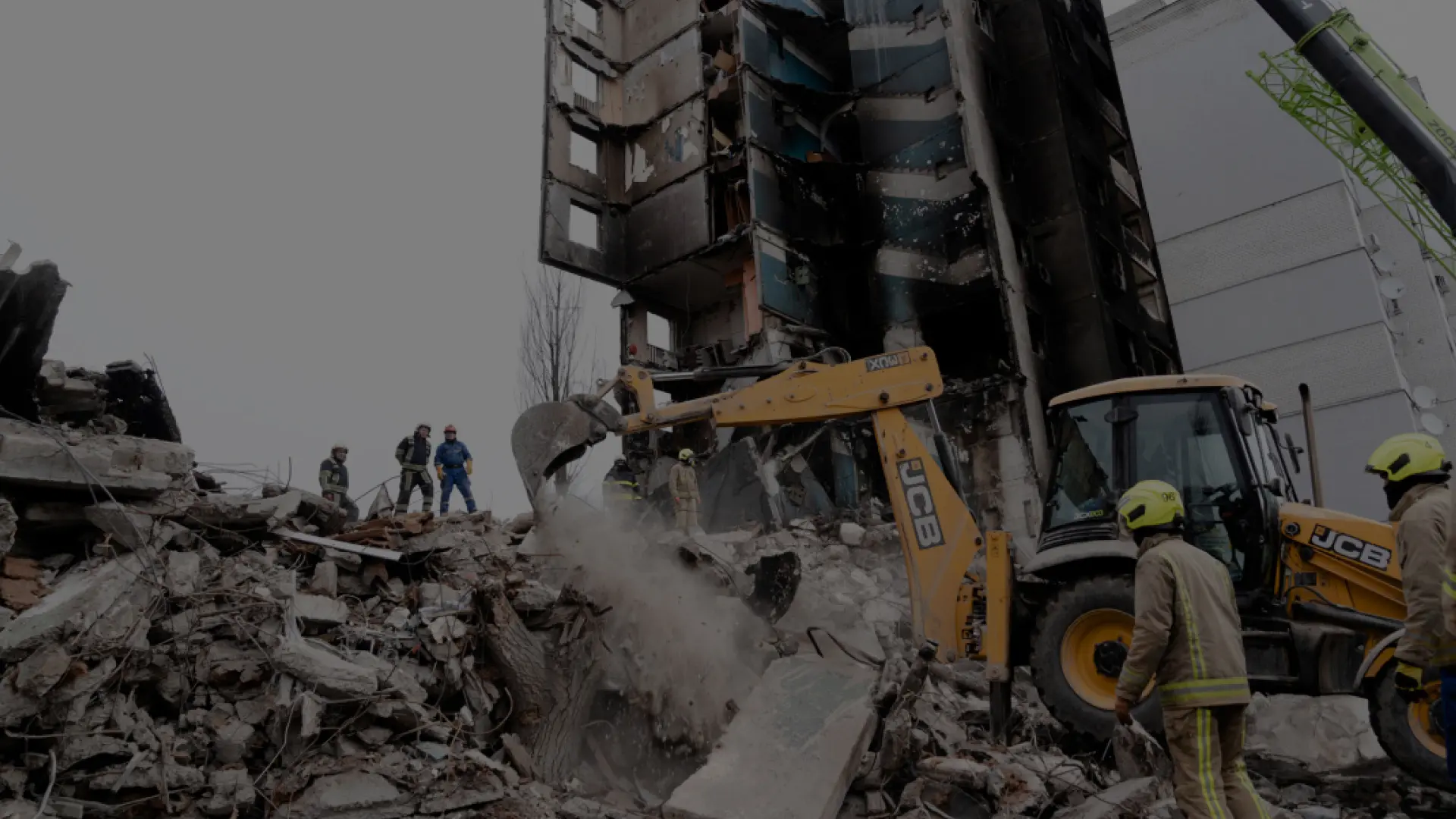
URenew & Gradus research
URenew & Gradus research
The needs of the residents of communities that suffered destruction during the war should be taken into account during restoration and development – this is the fundamental position of our URenew team. That's why we decided to properly analyze this issue. Together with the Gradus research platform, we conducted a relevant study in which residents from 12 cities in the Kyiv region, affected by a full-scale invasion, participated.
The research revealed that only 60% of respondents are partially or fully satisfied with the progress of the Kyiv region's restoration. At the same time, nearly the same percentage of Kyiv region residents (56%) believe that their opinions were not considered during the restoration works.
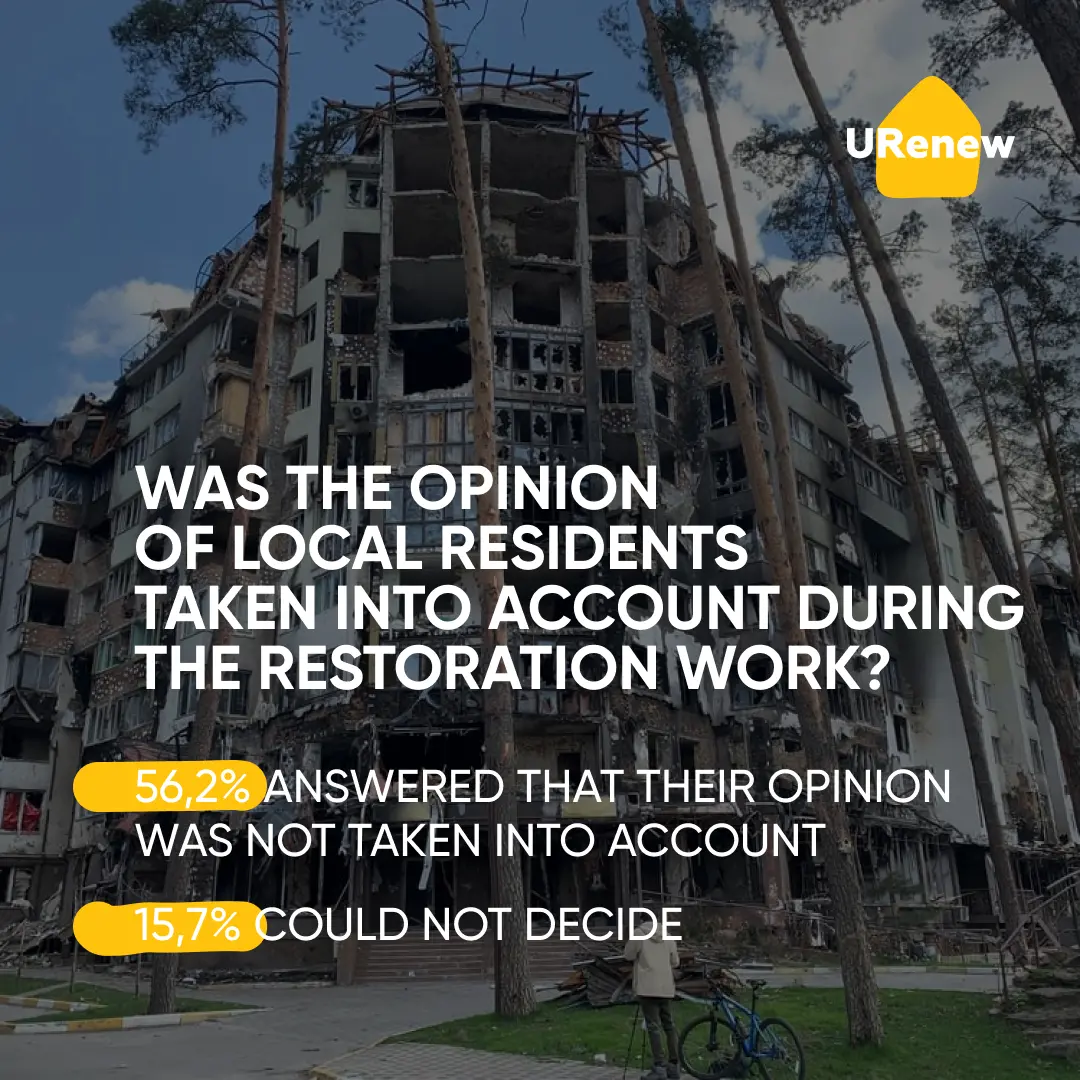
Regarding road reconstruction, restoration, and construction of educational institutions, 54% of Kyiv region residents express satisfaction, while only 49% are content with the restoration of damaged housing.
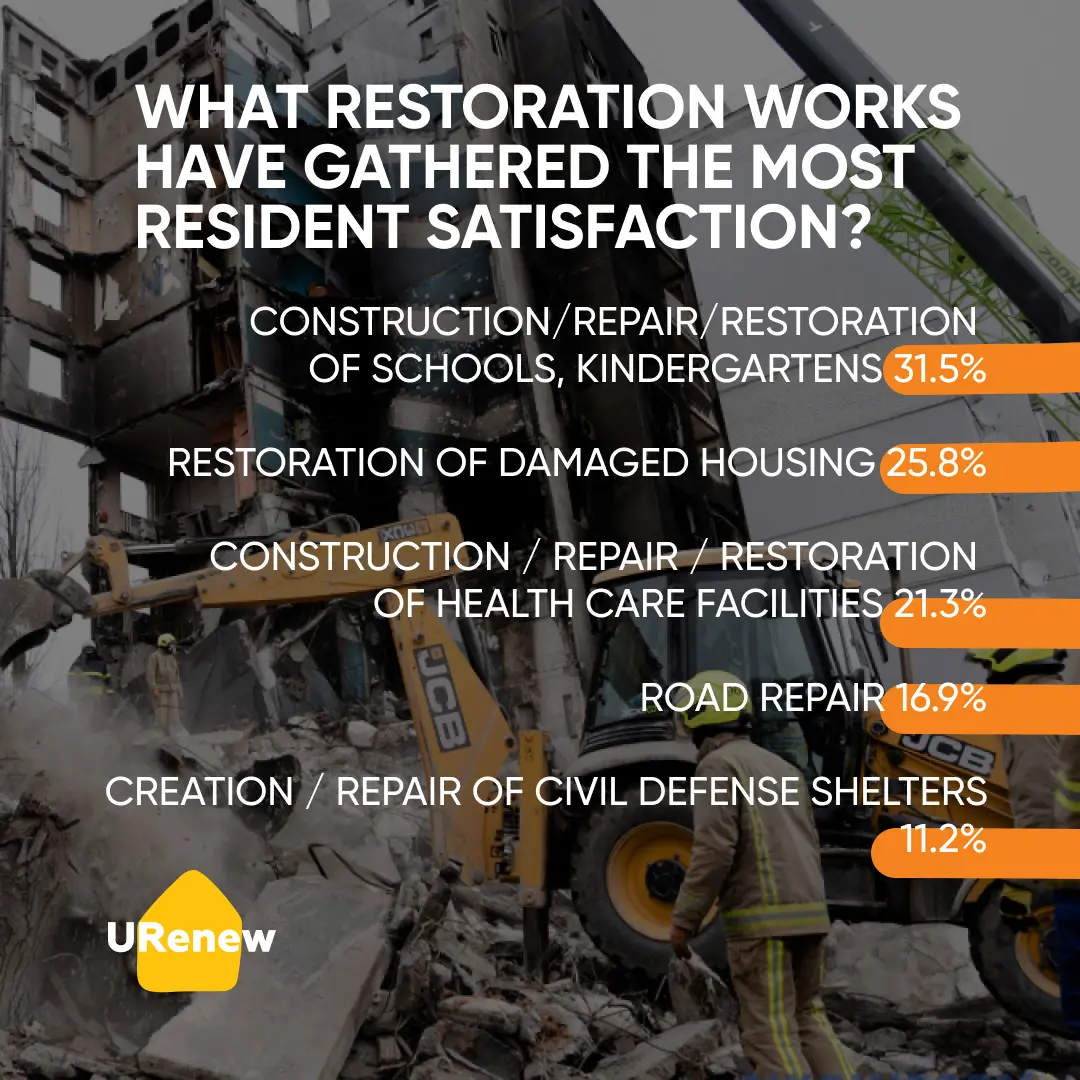
Survey participants attribute the most credit for restoration works to international donors (53%) and civic/volunteer organizations (42%). In comparison, local government and residents, sharing the third place, have only 29% of the votes. Furthermore, almost 80% of Kyiv region residents are willing to participate in the restoration of their residency areas. This is a valuable conclusion for us, indicating that with the thoughtful involvement of community members, these processes can occur more quickly and efficiently.
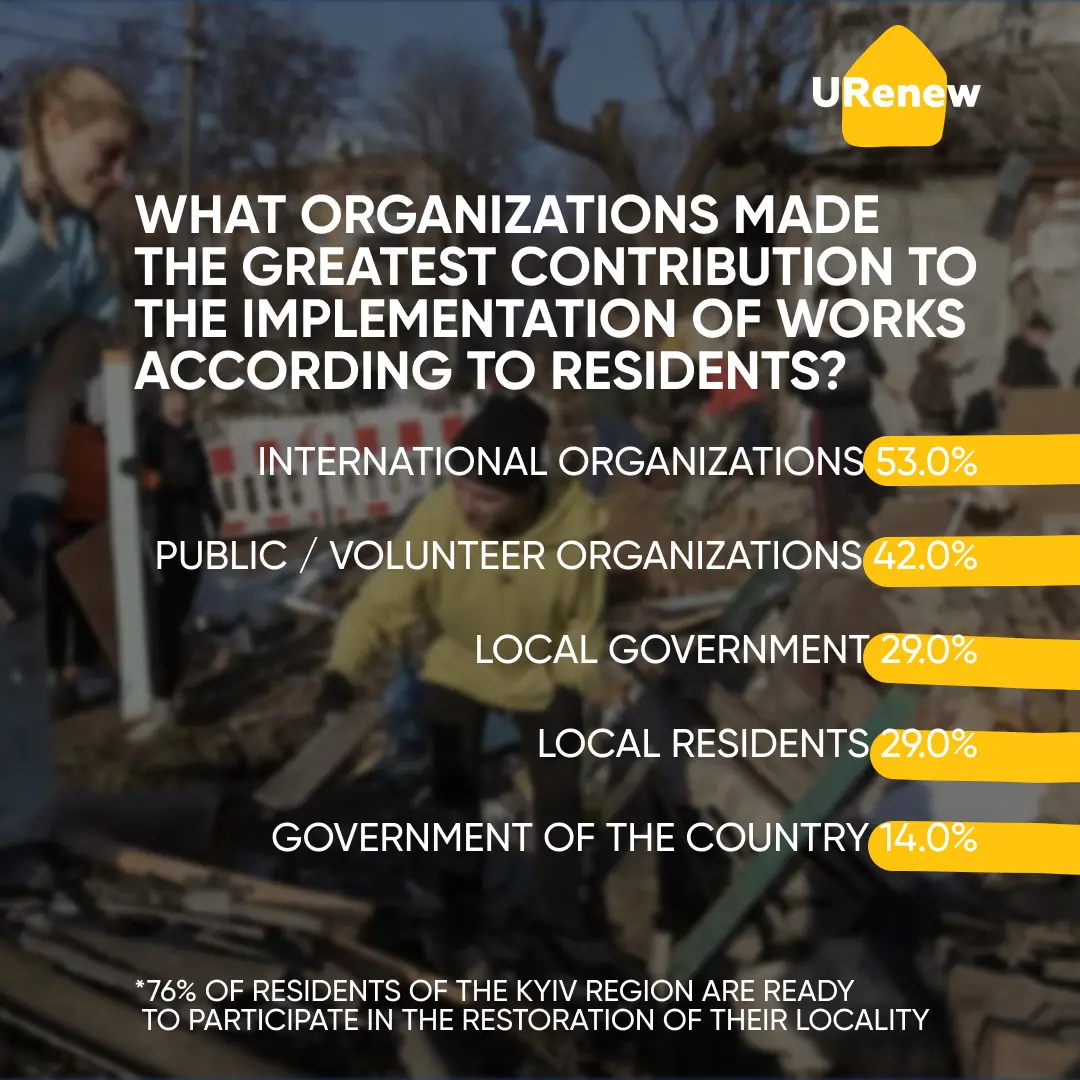
Kyiv region residents believe that creating jobs and restoring damaged housing can most significantly improve their quality of life. They gave slightly fewer votes for the creation and/or repair of bomb shelters.
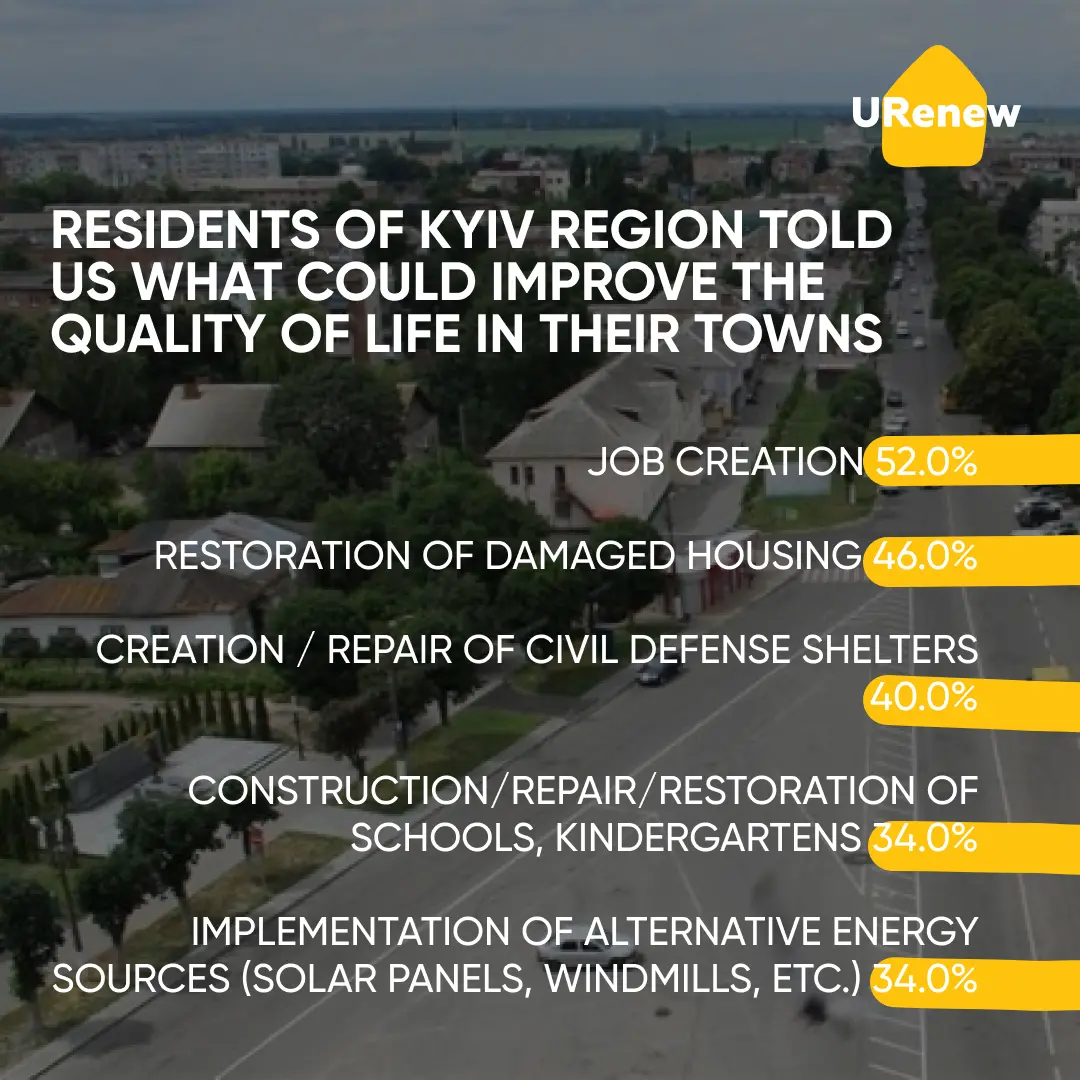
However, restoring schools and kindergartens and implementing alternative energy sources (such as solar panels, wind generators, etc.) are equally crucial for enhancing the quality of life.
Conclusions for communities based on our research:
- Effective communication channels with community residents and approaches to their participation/involvement need to be established. These channels should facilitate a two-way communication between community administration and residents, with a particular emphasis ensuring timely feedback.
- Nearly 80% of residents are willing to contribute to the restorations of their communities — physically, materially, or intellectually. Each community can harness significant organizational resources from this willingness.
- The most voiced need is the creation of jobs within communities. This aligns with the residents' dream of de-urbanization, where they can live and work in a cozy suburb with their housing, interesting work, and quality social services (education for children and healthcare). This sets ambitious community tasks to attract businesses through development strategies and investor engagement.